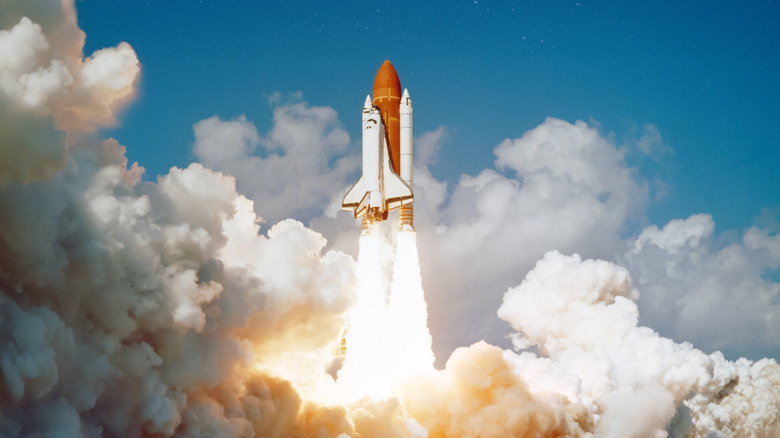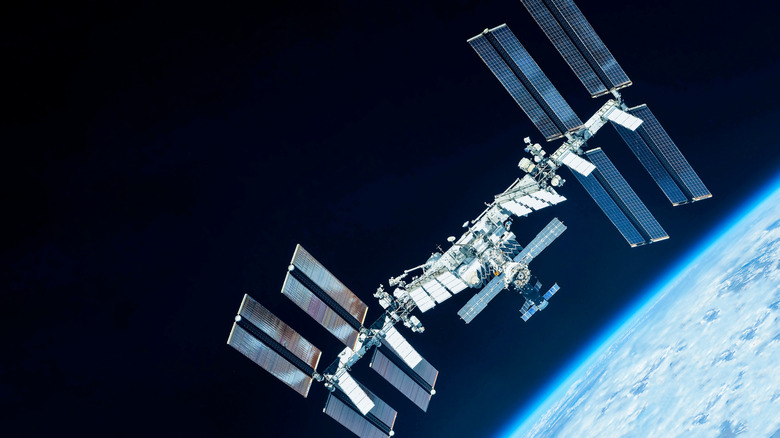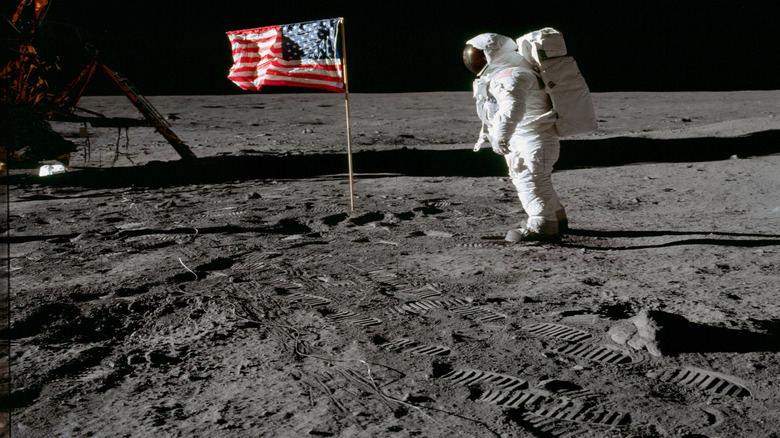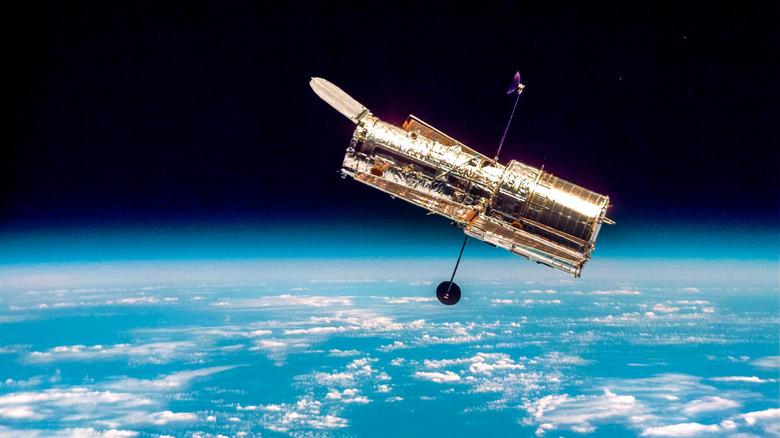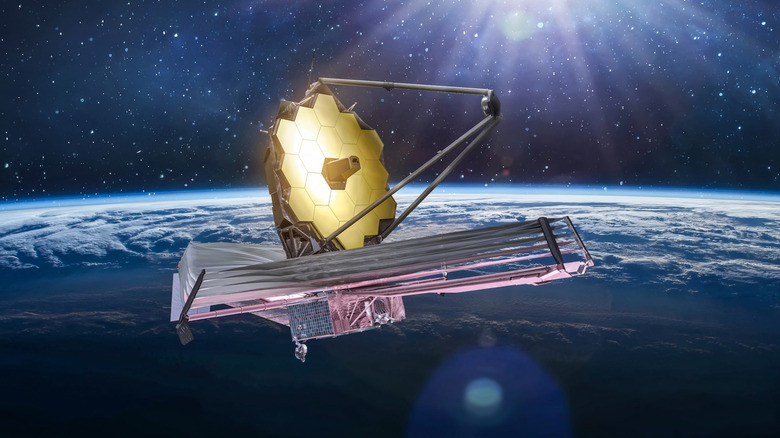5 Of The Most Expensive NASA Space Missions In History
NASA has long captured the imagination of humanity with its ambitions. We reached the moon, built space stations, placed telescopes in orbit, and unlocked the secrets of the universe with NASA's guidance. These achievements serve science, education, and inspire others, often yielding technologies that benefit life on Earth. At the same time, funding missions in space is extraordinarily expensive. The costs of development, vehicle launches, infrastructure, operations, risk management, and the long duration of certain missions add to the cost — that's been true throughout history, and across quite a few costly missions.
NASA is primarily funded through annual appropriations from the U.S. federal government, which are channeled via Congress, with roughly 0.5% or less of the federal budget allocated in recent years. Despite its relatively modest share of total federal spending, NASA faces deep budget cuts that could dramatically slow scientific progress. In fact, the 2026 budget proposal would cut NASA's funding by approximately 24% and slash nearly half of its science budget allocation. These cuts could delay, reduce, or even cancel future missions in space. As a result, the U.S. leadership in space exploration faces quite a challenge.
The high costs of missions arise from many factors: highly specialized engineering, extreme environmental and reliability requirements, long lead-times, launch expenses, human-rated safety protocols, and the need to operate in remote or harsh environments. In short: Bold ambitions cost bold money.
Space shuttle program (1972 - 2011)
NASA's space shuttle program (officially the Space Transportation System) began development in the early 1970s and achieved its first orbital flight on April 12, 1981. It operated until July 2011, culminating in 135 missions. The program's lifetime cost is commonly quoted as approximately $113.7 billion in nominal dollars through 2011. That said, some inflation-adjusted estimates push this figure up to $209 billion.
During its lifetime, the shuttle enabled human spaceflight, carried hundreds of astronauts from 16 countries, deployed and serviced major space assets (such as the Hubble Telescope), and constructed large modules of the International Space Station. The program introduced reusable spacecraft hardware and dramatically expanded U.S. access to low Earth orbit. But its high per-flight cost (averaging around $1.6 billion or more in later years) and two tragic accidents (Challenger in 1986 and Columbia in 2003) highlighted the unsustainable cost and potential risks of the program.
International Space Station (1998 - present)
The ISS is a multinational crewed orbital laboratory operated jointly by NASA along with its international partners. It has been continuously inhabited since November 2000, and it still remains active today. The station's cost to NASA alone has been about $3 billion annually in recent years, this is roughly a third of NASA's human spaceflight budget. (In a recent audit, though, the cost to NASA in FY2023 was approximately $4.1 billion.) The total U.S. investment in ISS construction, transport, and operations was estimated at nearly $75 billion back in 2014 (according to a NASA Inspector General estimate), and annual operating costs continued in the years following.
The ISS has achieved many firsts: continuous human presence in orbit, multinational cooperation in space, a laboratory for microgravity research, Earth observation, and demonstrations of concepts from across many different fields (biology, materials science, and technology, to name a few). It has served as a stepping stone for commercial low-orbit access and stimulated the development of commercial crew and cargo services. But as the station ages and safe operations become costlier, NASA faces the retirement and deorbiting of the ISS, planned for 2030.
Apollo Program (1960 - 1973)
The Apollo program installed an experiment on the moon that's still running, but more importantly, it was NASA's human lunar-landing initiative, launched in the 1960s. Official U.S. expenditure from 1960 to 1973 was approximately $25.8 billion (nominal dollars). When adjusted to 2020 dollars, the cost is often cited at about $257 billion.
The program's shape was profoundly shaped by both triumph and tragedy. On January 27, 1967, three astronauts – Gus Grissom, Ed White, and Roger B. Chaffee — were killed during a ground test for Apollo 1 when a cabin fire engulfed the spacecraft. Aside from the tragedy, the disaster also added hundreds of millions of dollars to the total program cost as NASA had to overhaul the spacecraft design, materials, and safety protocols.
Apollo achieved an enormous feat: landing humans on the Moon, beginning with Apollo 11 in July 1969, returning them safely, conducting extensive lunar science, and establishing the technological and industrial base for later research. It also helped spur huge advances in computing, material science, and engineering. The program ended its lunar landings by 1972 and shifted focus thereafter. The Apollo legacy remains one of the most transformative human exploration efforts ever undertaken.
Hubble Space Telescope (1990 - present)
Launched aboard the Space Shuttle Discovery in April 1990, the Hubble Space Telescope has become one of the most scientifically productive observatories in history. According to NASA, the mission has cost about $16 billion (in 2021 dollars) since its development back in 1977. But this price excludes the shuttle costs for servicing. Over more than three decades, Hubble has captured over 1.7 million observations and supported more than 20,000 scientific papers, fundamentally reshaping our understanding of the universe.
Hubble's discoveries include precisely measuring the universe's expansion rate, determining its age (about 13.8 billion years), and providing crucial evidence for dark energy. Its iconic Deep Field and Ultra Deep Field images revealed thousands of previously unseen galaxies, peering billions of years into the past of the universe. It has studied planets, nebulae, black holes, and supernovae, offering data across ultraviolet, visible, and near-infrared wavelengths. Beyond science, Hubble's breathtaking images inspired generations and bridged science with art and education.
James Webb Space Telescope (2003 - present)
The James Webb Space Telescope (JWST) is NASA's flagship infrared observatory, launched in December 2021 (after several long delays) and now fully in operation. NASA's internal documentation estimates the lifetime cost to the agency at about $9.7 billion over 24 years, with about $8.8 billion for spacecraft development and $861 million for initial operations. JWST was designed to observe the universe's first stars and galaxies, study exoplanetary atmospheres, and chart solar-system formation. Its cutting-edge optical systems, deployment at L2 (1.5 million km from Earth), and extremely challenging engineering contributed to its high cost.
The JWST has unveiled unexpectedly large and luminous galaxies from the early universe, challenging existing theories about how quickly cosmic structures formed after the Big Bang. It has also identified key molecules such as methane and carbon dioxide in the atmospheres of distant planets, offering new clues about their potential habitability. Finally, the JWST deepened our understanding of black hole growth, the origins of long-duration gamma-ray bursts, and produced the first direct image of an exoplanet.

